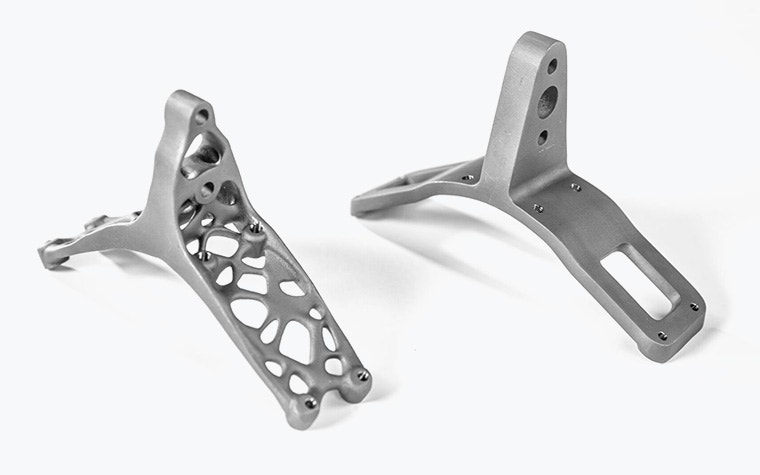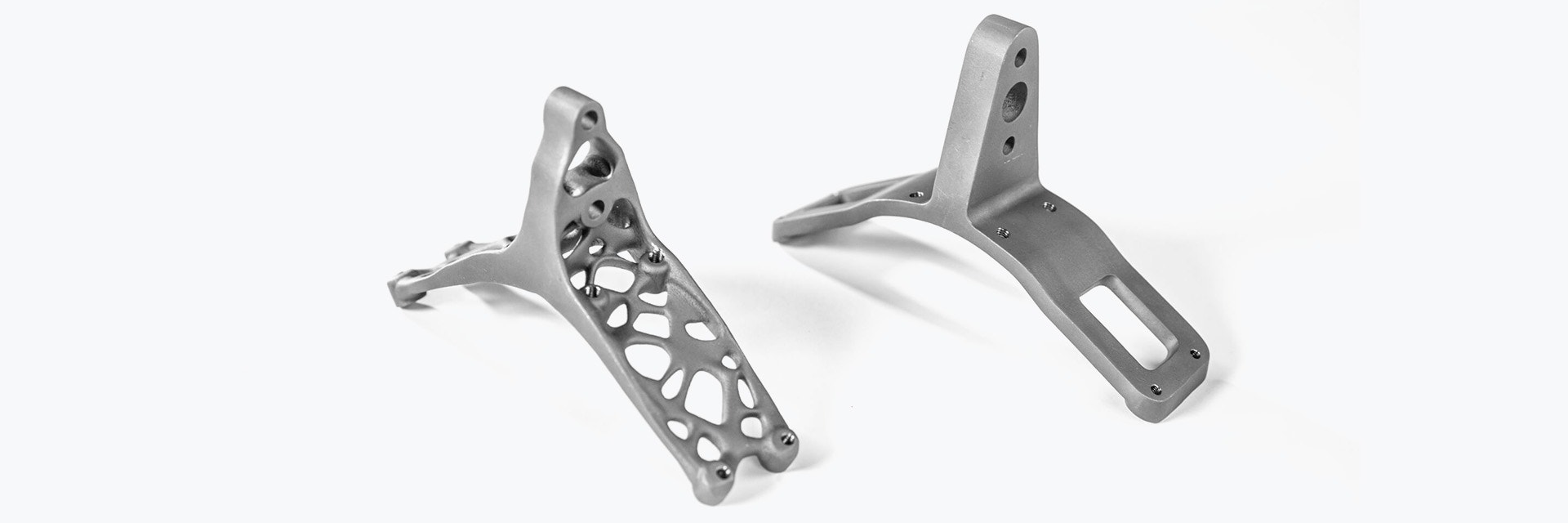EXPERT INSIGHT
3D-Printed Polymers Are Now Commonplace in Aerospace. Here's How Metal Can Follow Suit.
Erik de Zeeuw, Materialise

One of the biggest challenges to the widespread adoption of additive manufacturing in aerospace is part qualification. We’ve worked hard to lower that barrier for polymers — now, we're turning our attention to metal and the opportunities it brings to the production of low-criticality aerospace parts.
Take a flight with any major airline, and chances are you’re not far away from a 3D-printed polymer part. They’re now commonplace for interior applications with limited load-bearing and performance requirements — low-criticality parts — but getting to this stage came with its challenges, such as certification.
Certifying polymers
Companies like Materialise had to prove the parts they produced could meet the demands of aviation authorities, basing any product substantiation on real performance data. And that took time. We needed qualified materials and a fixed process, gathering the proof in collaboration with approved design organizations (DOAs) rather than relying on a data sheet.
The main reason for these restrictions is the inherent nature of additive manufacturing. You’re generating the properties during construction, so the 3D printing process greatly impacts the final outcome of your parts. Say you have a big variation in laser power, for instance; your product’s density might vary, affecting its performance or characteristics like flammability.
That’s why controlling the entire process and analyzing performance data is so essential. Today, that’s common practice for us and many others. We can safely and recurrently produce these low-criticality parts and easily adapt new ones. We’ve gathered over a decade’s worth of data from thousands of applications, and some of the biggest names in aerospace, such as Airbus, trust us to help them produce their flight-ready, 3D-printed parts.
Starting strong with low-criticality parts
But 3D printing's potential doesn't end with polymers — the aerospace industry is already finding uses for low-criticality, 3D-printed metal parts. OEMs focus on where AM brings the highest value, and superhero applications like GE's LEAP fuel nozzle are great examples of what it brings in terms of weight-saving and functional integration in critical environments. On top of that, there are many other applications, such as seat bezels, housings, interior trims, and ducts that have a positive use or business case when printed in metal, even without relying on 3D printing's traditional technical benefits.
These applications are a fantastic starting point for metal 3D printing. Just like when working with polymers, the ideal applications are repairs, spares, and in-cabin parts, mainly due to the benefits 3D printing brings to the entire supply chain.
Digital inventories
Airlines can quickly and affordably print spare parts on demand, eliminating excess costs associated with holding stock while reducing the risk of obsolescence and supplier production delays. This method becomes even more valuable when you consider the absence of minimum order quantities — airlines can order only the parts they need, further driving down costs and potential waste.
Repair, not replace
If an airline identifies a part that frequently breaks down — like the dado panel — it's more affordable and environmentally friendly to repair it rather than replace it. In many cases, this route is also faster, helping to limit expensive downtime for each aircraft.
And just like with polymers, we're hopeful that we can start providing the industry with metal parts that meet their needs sooner rather than later, and help airlines take advantage of 3D printing's technical and economic benefits. Similarly, the more we produce, the more data we gather — helping make it even easier for airlines to bring these 3D-printed parts onboard.
The first step in that process is for airlines and OEMs to evaluate their portfolio. What non-structural metal parts do you use? Where do you use them? Would they be suitable candidates for metal 3D printing? If they live within those zones where polymer parts found so much success — spares, repairs, and in-cabin parts — chances are you'd benefit by turning to 3D printing in the near future.
The journey from low to high-criticality parts
So, a surge in the adoption of low-criticality metal parts might not be that far away, but what about high-criticality components? That's where new requirements come into play. Unlike polymers and low-criticality parts, where static strength and flammability are the key characteristics, long-lasting, fatigue-loaded parts must be tested under duress.
This testing is both rigorous and essential, as just like the early days of certifying polymers, the difficulty lies in controlling the process — and it's considerably harder with selective laser melting (SLM). Right now, there's no excluding the risk of anomalies, something that machine manufacturers are working hard to improve. Unfortunately, predicting when and where these anomalies may appear is currently impossible. There are so many variables that can influence the process, and that creates a lot of possible failure modes.
That's a big issue for fatigue-loaded parts — especially with anomalies near the surface. Locating them isn't easy either, with any testing equipment. CT scanning works well but is expensive, and even that doesn't offer a 100% guarantee. In fact, alongside post-processing, quality control represents a significant part of the cost when printing high-performance parts, something that will need to come down for adoption to really take off.
Building the digital thread
So, what can we do to help? The additive manufacturing community is making a big effort to develop non-destructive testing methods that can help identify defects and analyze anomalies to see if they could lead to failure. Machine manufacturers are doing all they can to improve the process stability of SLM machines. And we’re all working to gather data and make sense of the digital thread — an area where Materialise’s quality and process control (QPC) can lead the way.
We’ve seen that our QPC hits the right notes with companies trying to qualify parts. They generate a lot of data from different sensors and inputs, which must be combined and correlated. But when that data is stored in separate documents or locations, it’s hard to see it all in context. They’re eager to see how QPC could simplify the digital thread for qualifying 3D-printed metal parts because they know that it’s just as important as proper production to solving the puzzle.
Our vast experience in metal AM’s digital workflow can be a key part of that equation as well, helping us move the industry forward. It’s a valuable asset in generating trust among aerospace companies, many of whom come to us not only for production but also for help in making sense of their own valuable data. And the more companies can do that, the better it is for everyone — it’s vital, in fact, to standardization.
What comes next?
For Materialise, the intention is to bring metal 3D printing to aerospace in the same way we work with polymers. We know that it’s a direct need for many of our customers, and we see the industry moving forward. The process can take time, but it’s inevitable that we'll get there. Until then, we’ll continue to do what we can to help: ensuring we control even more of our processes, from suppliers to incoming goods; sharing what data we can and helping others organize their own; and pursuing standardization across the wider 3D printing industry.
Naturally, we can't do it alone. To really move this process forward, we need the aerospace industry to be willing to test new waters, try new things, and put their trust in metal 3D printing. Seek out applications that can be improved through this technology, look for new solutions to existing problems, and you'll quickly see that metals bring just as many benefits to your entire supply chain as polymers. Providers like Materialise are perfectly placed to help you do that — all that's left is to start the conversation.
Share on:

Meet the author
Erik de Zeeuw, Market Manager, Materialise
You might also like
Never miss a story like this. Get curated content delivered straight to your inbox.
